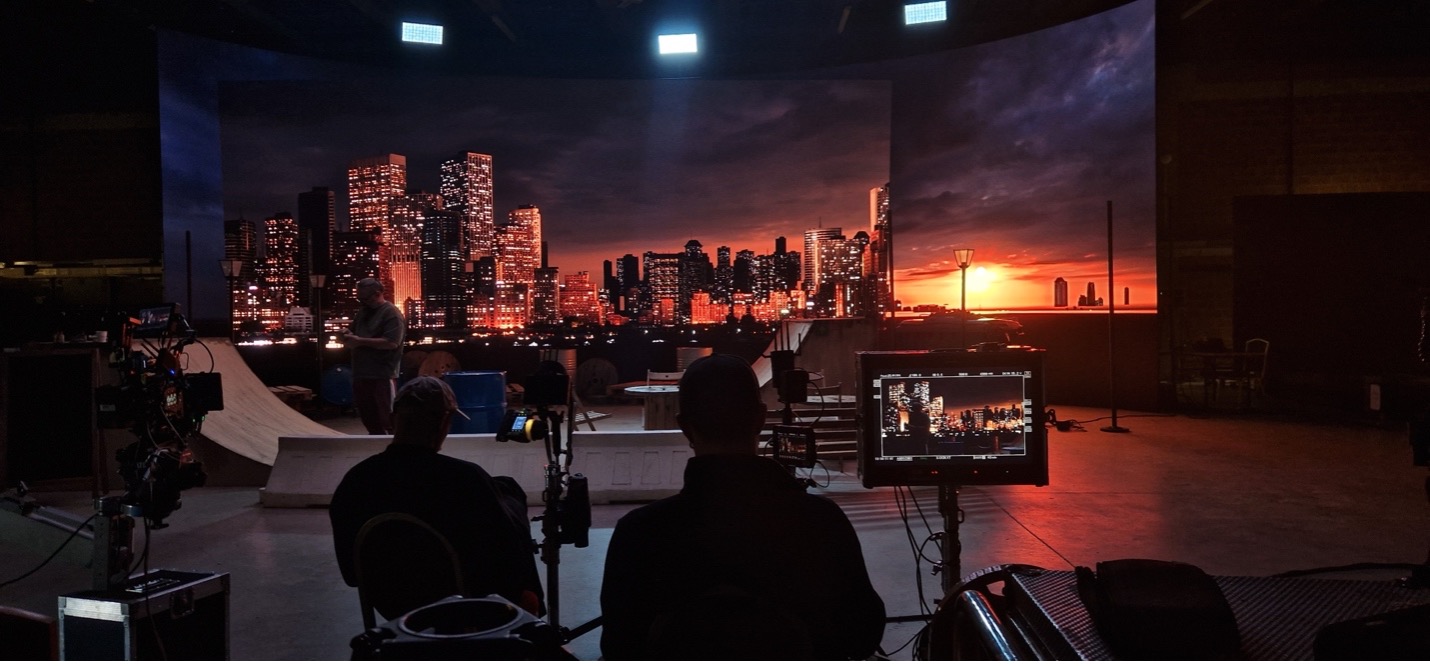Virtual production has been a boon for filmmakers; however, it is not totally without certain difficulties such as crashes. Last year, Chaos Innovation Lab showed off Project Arena, which aimed to reduce those issues, enabling the use of a team’s typical pipeline to quickly move their 3D scenes from popular DCC software onto LED walls, eliminating the need for game engines. Now out of beta, Arena’s results are fully path-traced.
A year ago, Chaos Innovation Lab provided a glimpse of what it called Project Arena, which would eliminate the need for a game engine in a virtual production workflow. At the time, Chaos said it expected the beta offering to be commercially available in 2025; this week, the company achieved that goal and has launched Chaos Arena.

As transformative as virtual production has been, the current process is plagued by crashes and often requires rebuilds, which can be very costly—thousands of dollars per minute, notes Christopher Nichols, director of special projects at the Chaos Innovation Lab. With Arena, users can use their regular DCC pipelines to quickly move their 3D scenes from popular tools like Maya, Houdini, Blender, and 3ds Max onto LED screens, without a game engine or conversion process. This means artists can use the same assets from preproduction to post.
Arena also adds in a level of real-time path tracing and stability that wasn’t possible before, accurately capturing lighting and seamlessly blending virtual environments with physical sets. Because its results are fully path-traced, Arena can handle an almost limitless amount of geometry.
The toolkit uses the Chaos Vantage renderer for real-time ray tracing within a virtual production volume, directly from an artist’s content creation software. Artists simply build their assets, bring a Chaos V-Ray scene file into Chaos Arena, and they are ready to start their virtual shoots, Nichols explains. Currently, artists can use existing assets from TurboSquid, Evermotion, and KitBash. Meanwhile, Chaos is working on USD and MaterialX support, which would mean artists could bring in any assets or shaders they want, even if they originated outside of the Chaos ecosystem.
Vantage is one of the first path tracers to support Nvidia’s DLSS 4 ray reconstruction/upscaling technology, a suite of neural rendering tools designed to boost FPS and image quality. Since the Project Arena beta, Nvidia introduced DLSS 4 at CES 2025 this past January, leading Chaos to integrate the Deep Learning Super Sampling tech. By implementing DLSS 4’s new denoiser algorithm—built on a new AI transformer model— users can achieve a noticeable improvement in the visual fidelity of wires, hairs, and interior scenes without upgrading their current RTX cards, Chaos contends. This boost ensures that even after denoising or upscaling, users will see perfect anti-aliasing of objects and textures as fine as 1 to 2 pixels, the company adds.
Last fall, Chaos challenged Project Arena by testing it in a high-value, real-world production. The short film was created in-house with assistance from renowned industry pros who were urged to push the new technology. The short is worth seeing in terms of what Arena can do as well as for the film’s many Easter eggs that VFX practitioners will enjoy. The 10-minute film, called “Ray Tracing FTW,” is available here.
Arena is available now and priced on a daily or annual rate.
LIKE WHAT YOU’RE READING? INTRODUCE US TO YOUR FRIENDS AND COLLEAGUES.